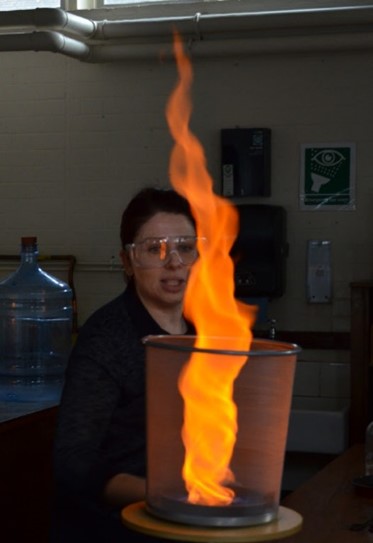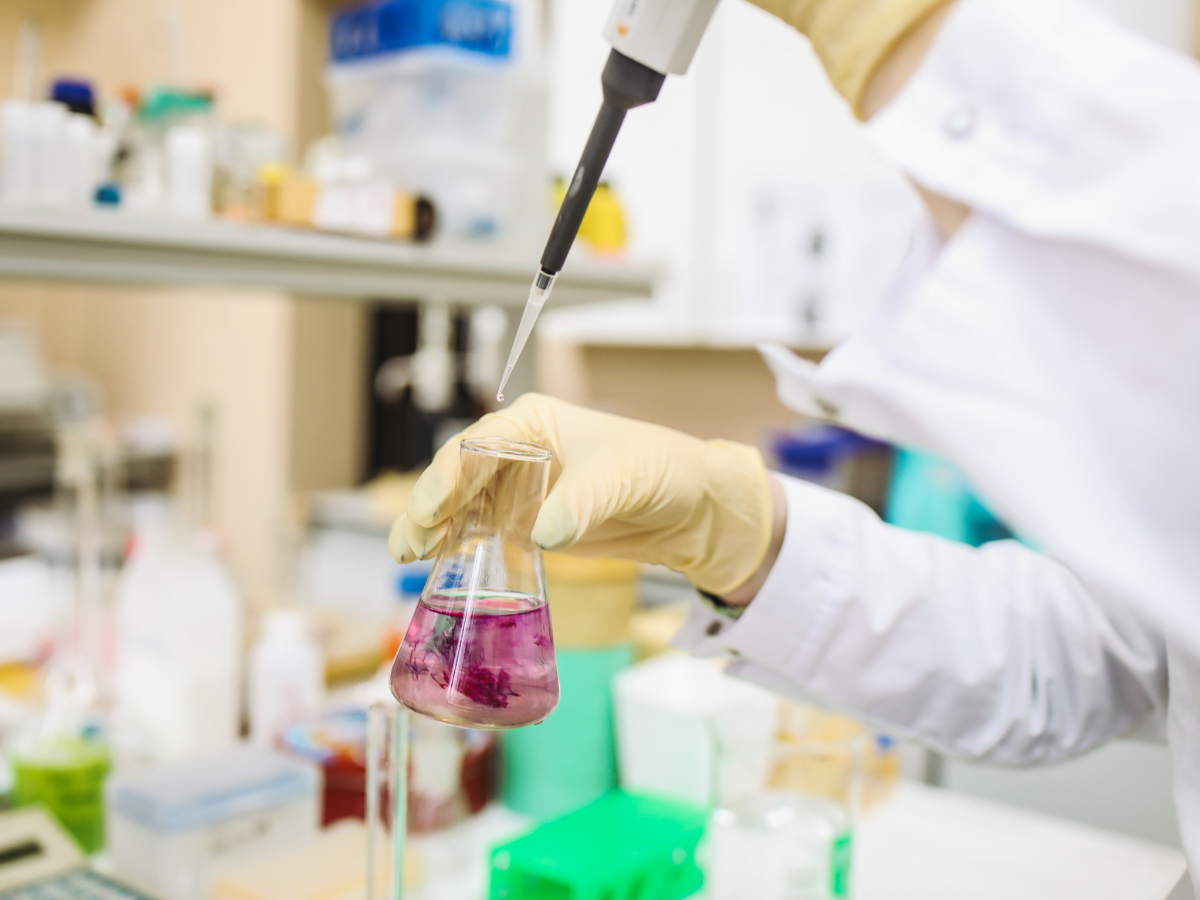As the adrenaline wanes from GCSE exam results day, I am getting ready to welcome students back to school as they continue with their science studies. As I prepare for the enrolment, I think about the students in my care; often they are a mixture of Combined Science and Chemistry GCSE students, but this time they will also have the effect of their pandemic teaching coupled with a focused bias towards topics on the Advanced Material. So, how are these variables likely to affect the ability and knowledge of the new co-hort of A-level Chemistry Students? And how will this feed into my planning and delivery to help each student succeed?
What is the mixture of students likely to be?
In terms of types of GCSEs, two and a half times more youngsters gain combined science than Chemistry GCSE. Often the GCSE Chemistry students have self-selected through option blocks in Year 9 and therefore are more motivated to study the subject. The higher motivation and smaller class sizes, coupled with good attitude to learning, usually lead to higher achievement. Therefore, it is more likely that GCSE Chemistry students continue their studies to Year 12. That said, there are always some students who have discovered their love of Chemistry during Year 11 or got a surprisingly high result, which means they want to continue their studies into A-level. So there is always a mix of backgrounds in the Year 12 class.

What previous learning is needed to be successful in A-level Chemistry?
Although AQA say that there are no previous learning requirements to study AS or A-level Chemistry, they do recommend that students should have the skills and knowledge associated with at least GCSE Science or a GCSE Chemistry course, or equivalent. This is often interpreted as a good pass or higher at GCSE; with many schools favouring the result from a higher tier paper rather than a foundation tier paper.
Interestingly, according to OFQUAL analysis (https://analytics.ofqual.gov.uk/), there has been less variability in the grades in the Chemistry GCSE compared to combined science, with this double GCSE seeing a slight drop in grades since the 2019 examination results. It is worth noting that at least 20% of the assessment for this course is given for the mathematical requirements, often schools and colleges also insist on a good pass (grade 5) in GCSE mathematics or equivalent.
How has the Advanced Material affected the teaching and learning of students?
The Advanced Material was released in early 2022, and at this point most of the GCSE courses had been fully taught. The material gave focus of specification points that would definitely be tested and those that definitely would not be assessed. The material was clear that all topics in Paper 1 in Trilogy could be assessed (Atomic structure and the periodic table; Bonding, Structure, and the Properties of matter; Quantitative chemistry, Chemical changes; and Energy changes). In paper 2, 5.9.2 Carbon dioxide and Methane as greenhouse gases in the foundation tier and 5.8.2 Identification of common gases in the Higher Tier were detailed as not being assessed.
The Advanced Material detailed the specification points that definitely would be assessed, however much of the specification was not referenced. This means that it could have examined with low stakes questions. Therefore, it is likely that classroom teaching focused on the detailed specification points that were definitely going to be assessed, rather than the whole specification. So, only diligent students probably revised all parts of the specification in their own time and had limited practice in school. The effect of this focused preparation is that students have missed out on deeper thinking on much of the specification and probably can repeat information, but do not fully understand and therefore cannot synthesise answers for unfamiliar situations.
How is the GCSE Chemistry and GCSE Combined Science candidate’s learning different?
So, let’s consider the learning that a GCSE Chemistry candidate would have in addition to the trilogy combined science candidate. The table below shows the extra specification points that a GCSE Chemistry candidate would cover and how they underpin or are repeated in the AS-level and/or A-level Chemistry specification. The last column then states whether this information was likely to be prioritised during the revision process in light of the Advanced Material.
| GCSE Chemistry | Link to A-level Chemistry | Advanced Material |
| 4.1.3 Properties of transition metals (chemistry only) | 3.2.5 Transition metals (A-level only) | Potentially assessed |
| 4.2.4 Bulk and surface properties of matter including nanoparticles (chemistry only) | N/A | Assessed in FT not assessed in HT |
| 4.3.3 Yield and atom economy of chemical reactions (chemistry only) | 3.1.2.5 Balanced equations and associated calculations | Potentially assessed |
| 4.3.4 Using concentrations of solutions in mol/dm3 (chemistry only) (HT only) | 3.1.2.2 The mole and the Avogadro constant | Potentially assessed |
| 4.3.5 Use of amount of substance in relation to volumes of gases (chemistry only) (HT only) | Good foundation for 3.1.2.3 The ideal gas equation | Potentially assessed |
| 4.4.2.5 Titrations (chemistry only) including Required practical 2: (chemistry only) determination of the reacting volumes of solutions of a strong acid and a strong alkali by titration. | Required practical 1 Make up a volumetric solution and carry out a simple acid–base titration. | Assessed |
| 4.5.2 Chemical cells and fuel cells (chemistry only) | 3.1.11.2 Commercial applications of electrochemical cells (A-level only) | Not assessed in FT, potentially assessed in HT. |
| 4.7.2 Reactions of alkenes and alcohols (chemistry only) | 3.3.4 Alkenes and 3.3.5 Alcohols | Potentially assessed |
| 4.7.3 Synthetic and naturally occurring polymers (chemistry only) | 3.3.4.3 Addition polymers and 3.3.12 Polymers (A-level only) | Potentially assessed |
| 4.8.3 Identification of ions by chemical and spectroscopic means (chemistry only) | 3.3.6 Organic analysis, Group 2, the alkaline earth metals, 3.2.3 Group 7(17), the halogens 3.3.9 Carboxylic acids and derivatives (A-level only) and Required practical 11 Carry out simple test-tube reactions to identify transition metal ions in aqueous solution. | Assessed in FT and Potentially assessed in HT |
| 4.10.3 Using materials (chemistry only) | Potentially assessed | |
| 4.10.4 The Haber process and the use of NPK fertilisers (chemistry only) | 3.1.6 Chemical equilibria, Le Chatelier’s principle and K 3.2.5.6 Catalysts (A-level only) | Assessed |
How can we help all students to be ready for A-Level Chemistry?
It is important to remember that many students will have had 3 months or more from the last time they formally studied Chemistry. So, reminding the GCSE Chemists of their previous learning is important, but we have to balance this with preventing them from being bored and turned off. We also need to introduce topics to the combined science candidates without them feeling like their missed out in their GCSEs or that they cannot carry on their Chemistry studies as they don’t understand. Four different ways to recap or introduce topics are:
- Use Flipped Learning – Give students excerpts from GCSE textbooks and ask them to make their own notes to illicit the key points. Then give students a GCSE topic test and allow them to use their notes to answer the questions. Complete the marking as a class and discuss any answers that are difficult.
- Directed activities (DARTs) – Give students key notes routed in GCSE about the topic. Ask them to read through the work and underline any information that they understand, put a ‘?’ by any information they do not understand and a ‘!’ by new information. As a class, discuss the text and expand on any points that students do not understand.
- Digital or revision lesson – ask students to complete relevant GCSE lessons, for example from your school’s GCSE resources or Oak National Academy, as pre-learning before the A level lesson begins
- Group work – Carefully curate groups which include different abilities and different GCSE backgrounds. Give each team a section that is the foundation from GCSE, which will be built on in the topic. Each group should create a 5-minute presentation to deliver to the class with an A5 handout of salient points, a worked example of an exam–style question and a question for students to attempt. Students then deliver their presentations and the remaining groups provide feedback as per the school marking policy.
Sam Holyman is Lead teacher of Science and STEM in Coventry, and formerly West Midlands ASE President. She is also the author of a number of best-selling science textbooks for Secondary Science Teaching (including the AQA GCSE Foundation: Combined Science Trilogy and Entry Level Certificate Student Book), and a keen advocate of innovative teaching and learning.
Read more from Oxford Science Team:



